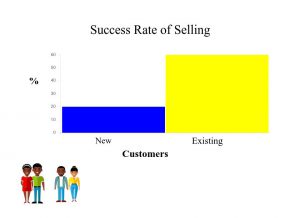When many of us hear the word “outsourcing,” we think of huge corporations firing their domestic employees and hiring overseas contractors to do the same job for less money. While that is one (extreme) example of outsourcing, choosing to outsource simply means hiring an outside contractor instead of a full-time employee to do a job, or to contract out a task that you’ve been doing yourself.

Why outsource, or to put it another way, hire independent contractors? How can paying for someone to do work for you actually save you money? Well, if your small business has full-time employees, then you know how expensive it is to hire them; it’s also very costly to lose an employee, so the last thing you want to do is overburden them with tasks they weren’t hired to do. And, if you don’t have employees, or if you have minimal staff, maybe you think it’s cheaper and faster to do everything yourself. But unless you’re highly trained in multiple disciplines (IT, admin, bookkeeping, etc, etc), then bringing a professional onboard can mean getting things done in a way that saves you time and money. After all, your time is money!
So the question becomes: to outsource or not to outsource? Let’s look at what jobs you should consider outsourcing, whether it might be the right time for you to do so, and the pros and cons of hiring independent contractors.
Commonly Outsourced Services
You probably already know what tasks are becoming burdensome to you or your employees, and most likely these tasks fall under three categories. When it comes to outsourcing, there are three main areas that most small businesses outsource: operations, marketing, and finance. Many tasks can even be outsourced to apps!
- Operations:
-
- Admin – Most administrative tasks can either be done by a remote independent contractor, or even a virtual assistant app.
-
- Hiring – Stop getting your postings lost in a sea of other job openings! There are tons of reputable recruiting firms out there that you can use.
-
- Cleaning services – If you have a physical workspace that clients or customers enter, the cost of having it clean, presentable and client-friendly is well worth it.
- Time management – This one is a no-brainer. There are so many timesheet and time tracking apps out there that there’s no excuse to have any employees manually filling out forms.
- Marketing:
-
- Design and development – A good logo is a must, so don’t hesitate to consult with a pro!
-
- Social media marketing and SEO – SEO can be a very complicated thing, so if it’s not your jam, then you should consider looking into a specialist, who can offer valuable expertise that will get your business noticed.
- Customer service and support – This is one area that can really have a big impact on your growth, so if you’re finding that customer requests and questions are reaching an unmanageable level, you should consider outsourcing customer support. Bonus: you can hire independent professionals in different time zones and offer 24/7 support!
-

Outsourcing a bookkeeper can help find ways to save more money. Finance:
-
- Bookkeeping – Having a bookkeeper consolidate all of your info can make it easier to spot where you’re losing money and where you could be spending less.
-
- Tax preparation – Similarly, tax professionals can spot deductions you may have missed.
-
- Payroll
When to Outsource
There was a very important point made above that we don’t want you to miss: as the business owner, your time is very valuable. Every hour you spend on things that could be outsourced, such as the tasks outlined above, is time that could be spent growing your business. So, to determine whether it might be time to think about outsourcing, start by looking at the “lower” priority tasks that are taking up your time, track the amount of time you’re spending on each task, and calculate how much it’s costing your business.
To help you, ask yourself these questions, starting with the question of time versus money:
- Are the costs of the service lower than what it would take in time and manpower to get it done yourself or by an in-house team?
- Are some responsibilities pulling you or your employees away from higher priorities?
- Are the tasks that you’re considering outsourcing services offered by your business? If not, don’t waste your time on it; stick to the more important stuff!
- Is there a competitive advantage to doing it in-house? For example, unless you’re a tech company, is there a reason to deal with IT yourself or have an in-house IT team?
- Is the service something you need help with on an ongoing basis, or could you contract someone to do it only when needed? A once-a-year marketing campaign, for example, doesn’t require an in-house staff, and it will be more cost-effective to have a pro take care of it than trying to do it yourself.
- Similarly to the point about using outside marketing, is the task something someone else (or software) could do better and more efficiently?
The Pros
It might be time for your business to use independent contractors, or put some money toward some excellent software to help you in your day-to-day operations. But before you decide, take a look at the pros and cons of outsourcing. First, the advantages:
- Reduces and controls costs – Outsourcing is usually cheaper than hiring an employee, and having a fixed contract means you’ll always know exactly what will get done for what price.
- Improves focus – By outsourcing less important tasks, you increase you and your employee’s focus on tasks that are more important to your growth.
- Expands talent pool – You can draw from a potentially endless pool of talent!
- Saves time (and money) – You’ll have more time, plus professionals can get things done in less time (and remember, time is money!)
The Cons
- Contractors are not as involved/invested – An independent contractor may not be as invested in your business as a full-time employee, and will also not have the same knowledge of the day-to-day workings and goals of your business.
- Communication issues could arise – When you outsource, checking in on people doing work for you becomes more difficult. This is especially true if you outsource to another country, where language barriers and time zone issues may come into play.

- Increased security threats – The more people who have access to a company’s networks, data, and resources, the more security threats exist.
While there is definitely some serious consideration that needs to go into choosing to outsource, don’t think of it as a bad word! Hiring independent contractors, or purchasing software to take some of the burden off of you, can actually be a cost-effective way to keep your small business growing. Ask yourself the questions above, consider the pros and cons, think about what tasks you might need help with, and decide whether freeing up your time is exactly what you need to reach your goals.


















